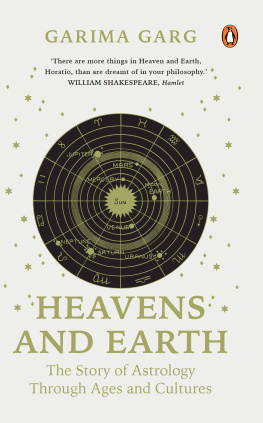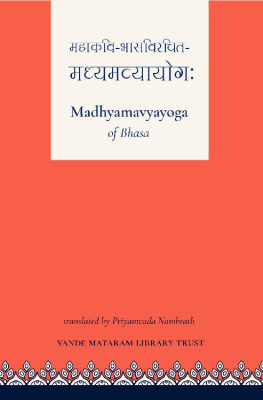Priyamvada Natarajan - Mapping the Heavens
Here you can read online Priyamvada Natarajan - Mapping the Heavens full text of the book (entire story) in english for free. Download pdf and epub, get meaning, cover and reviews about this ebook. year: 2016, publisher: Yale University Press (Ignition), genre: Science fiction. Description of the work, (preface) as well as reviews are available. Best literature library LitArk.com created for fans of good reading and offers a wide selection of genres:
Romance novel
Science fiction
Adventure
Detective
Science
History
Home and family
Prose
Art
Politics
Computer
Non-fiction
Religion
Business
Children
Humor
Choose a favorite category and find really read worthwhile books. Enjoy immersion in the world of imagination, feel the emotions of the characters or learn something new for yourself, make an fascinating discovery.

- Book:Mapping the Heavens
- Author:
- Publisher:Yale University Press (Ignition)
- Genre:
- Year:2016
- Rating:4 / 5
- Favourites:Add to favourites
- Your mark:
- 80
- 1
- 2
- 3
- 4
- 5
Mapping the Heavens: summary, description and annotation
We offer to read an annotation, description, summary or preface (depends on what the author of the book "Mapping the Heavens" wrote himself). If you haven't found the necessary information about the book — write in the comments, we will try to find it.
Mapping the Heavens — read online for free the complete book (whole text) full work
Below is the text of the book, divided by pages. System saving the place of the last page read, allows you to conveniently read the book "Mapping the Heavens" online for free, without having to search again every time where you left off. Put a bookmark, and you can go to the page where you finished reading at any time.
Font size:
Interval:
Bookmark:
MAPPING THE HEAVENS

THE RADICAL SCIENTIFIC IDEAS THAT REVEAL THE COSMOS

PRIYAMVADA NATARAJAN

Published with assistance from the foundation established in memory of Amasa Stone Mather of the Class of 1907, Yale College.
Copyright 2016 by Priyamvada Natarajan.
All rights reserved.
This book may not be reproduced, in whole or in part, including illustrations, in any form (beyond that copying permitted by Sections 107 and 108 of the U.S. Copyright Law and except by reviewers for the public press), without written permission from the publishers.
Yale University Press books may be purchased in quantity for educational, business, or promotional use. For information, please e-mail (U.K. office).
Designed by James J. Johnson.
Set in Adobe Caslon Pro and Whitney types by Integrated Publishing Solutions.
Printed in the United States of America.
ISBN 978-0-300-20441-4 (cloth : alk. paper)
Library of Congress Control Number: 2015953466
A catalogue record for this book is available from the British Library.
This paper meets the requirements of ANSI/NISO Z39.481992
(Permanence of Paper).
10 9 8 7 6 5 4 3 2 1
To Amma and Appa


Our map of the cosmos has altered dramatically in the past hundred years. In 1914, our own galaxy, the Milky Way, constituted the entire universealone, stagnant, and small. Cosmological research still relied fundamentally on classical conceptions of gravity developed in the seventeenth century. Modern physics and the triumphs of general relativity have shifted humanitys entire comprehension of space and time. Now we see the universe as a dynamic place, expanding at an accelerating rate, whose principal mysterious constituents, dark matter and dark energy, are unseen. The remainder, all the elements in the periodic table, the matter that constitutes stars and us, contributes a mere 4 percent of the total inventory of the universe. We have confirmed the existence of planets orbiting other stars. We question the existence of other universes. This is remarkable scientific progress.
Cosmology, perhaps more essentially than any other scientific discipline, has transformed not only our conception of the universe but also our place in it. This need to locate ourselves and explain natural phenomena seems primordial. Ancient creation myths shared striking similarities across cultures and helped humans deal with the uncertainty of violent natural phenomena. These supernatural explanations evoke a belief in an invisible and yet more powerful reality, and besides, they rely deeply on channeling our sense of wonder at the natural world. The complex human imagination enabled ancient civilizations to envision entities that were not immediately present but still felt real. Take for instance Enki, the Sumerian god of water whose wrath unleashed floods, or the Hindu god of rain and thunderstorms, Indra, whose bow was the rainbow stretched across the sky with a lightning bolt as his arrow. The most powerful myths are the ones that force us to take huge leaps of imagination but, at the same time, help us to remain rooted.
As a child growing up in India, I also felt this drive to locate myself in the world. My first guide was the Encyclopaedia Britannica. Thirty-two volumes of the fifteenth edition, sitting on my parents bookshelf, represented for me everything that was known at that time. Enchanted, I immersed myself in ancient maps, maps that guided the voyages of exploration, and maps of the sky. The stars transfixed me. My personal cartographic adventure also gave me my first taste of scientific research. Programming a Commodore 64, I wrote code to generate the monthly sky map over Delhi for a national newspaper. Thus began my love affair with the idea of discovery and exploration. I studied physics, mathematics, and philosophy during my undergraduate years at the Massachusetts Institute of Technology. My curiosity next led me to graduate study in MITs Program in Science, Technology, and Society, then across the pond to Cambridge University for a PhD in astrophysics. Now, as an active scientist, I continually draw on my intellectual training in the history and philosophy of science to reflect more deeply on the process of scientific discovery and how it shapes the knowledge we produce.
At its heart, my research as a theoretical astrophysicist, mapping dark matter and understanding the formation of black holes, is driven by the same sense of wonder and search for explanation of the universe that the ancients probably felt. I am still engaged in exploring the meanings of maps and how they anchor us, matters that first intrigued me as a girl in Delhi. My work exploits the bending of light from distant galaxies, gravitational lensing, to map the invisible dark matter that causes these deflections. I also investigate the formation and growth of the universes most bizarre and enigmatic objects, black holes. Currently, I am involved in one of the largest and most innovative mapping exercises of the universe ever undertaken: the Hubble Frontier Fields Initiative. The goal of this project is to peer more deeply into the distant universe and to map dark matter more accurately than ever before. Between 2014 and 2017, a significant portion of the observing time of the cameras aboard the Hubble Space Telescope will be devoted to this enterprise. Of course, I am one of many researchers contributing to the greater map of the universe that these unique data will provide. Many new, exciting discoveries lie ahead. We, like the generations of scientists who came before us, may find ourselves challenged to completely rethink the status quo.
While there are many books that tell the history of cosmological discoveries, my goal here is to recount how scientific ideas have been developed, tested, debated, and eventually accepted. You certainly need not be an astrophysicist to follow the story, and the examples that I chronicle, though cosmological, are meant to illustrate much broader trends in scientific research and discovery. In particular, I trace the development of radical scientific ideas that have continually reshaped our cosmic map. I find the process by which these ideas have gained traction and advanced from obscurity to acceptance deeply fascinating. In cosmology, the making and remaking of maps often reflects this process, leaving behind cartographic evidence. Seismic shifts in our view of the universe have required overhaul of our knowledge maps in the past century. But the acceptance of new ideas is not linear or instantaneous and is always contested. As scientists have challenged prevailing understandings of the universe, our world view and metaphorical map have morphed ceaselessly, requiring us to adapt and be open to change.
This is a story of extraordinary leaps of imagination, of radical new ideas fueled by discoveries and data. The journey to acceptance of an idea reveals many other facets of sciencethe emotional, psychological, personal, and social dimensions that extend beyond the purely intellectual pursuit of knowledge. This view is contrary to the popular perception of unbiased inquiry by purely objective researchers engaged in deriving fixed truths from nature. The fact is, science is ultimately a human endeavor; therefore, it is laced with subjectivity.
Next pageFont size:
Interval:
Bookmark:
Similar books «Mapping the Heavens»
Look at similar books to Mapping the Heavens. We have selected literature similar in name and meaning in the hope of providing readers with more options to find new, interesting, not yet read works.
Discussion, reviews of the book Mapping the Heavens and just readers' own opinions. Leave your comments, write what you think about the work, its meaning or the main characters. Specify what exactly you liked and what you didn't like, and why you think so.







